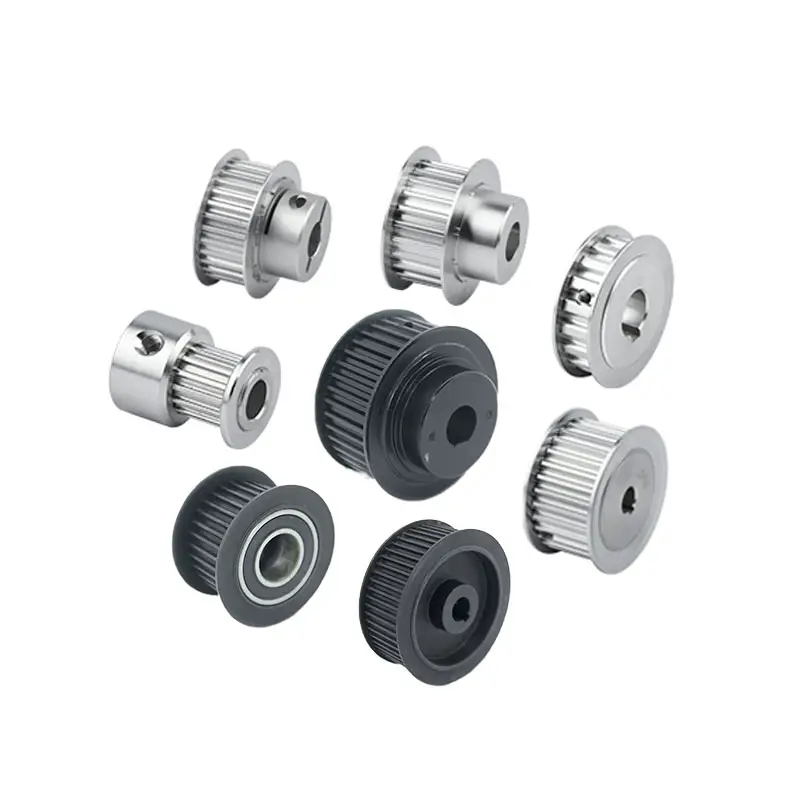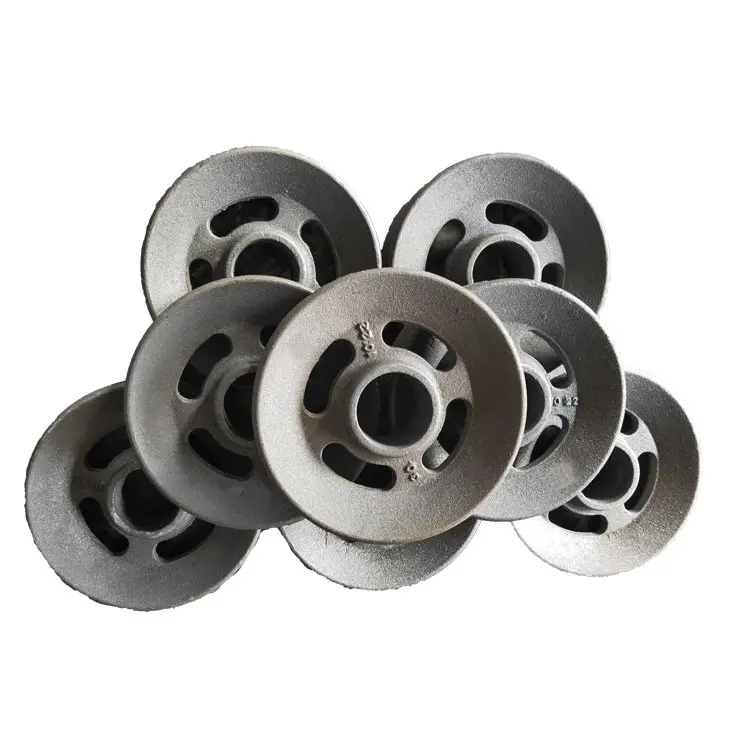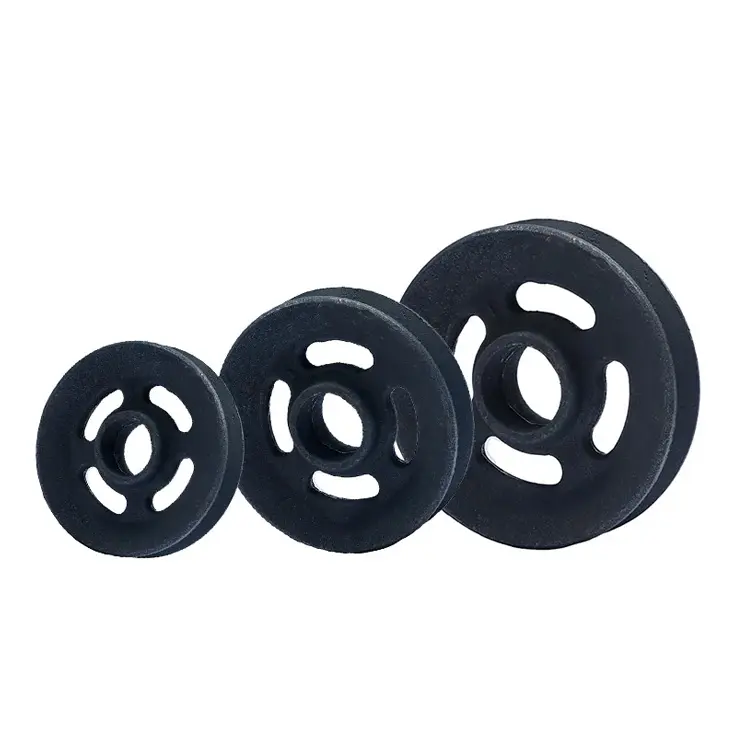Product Description
12 mm Rubber Pulley Lagging Conveyor Belt Pulley Lagging
Why Choose Us
- Manufacturer dedicated to conveyor pulley lagging ,and other conveyor accessories.
- SGS audited supplier.
- ISO9001 certified factory.
About Conveyor Pulley Lagging
There will be normal or unexpected wear or aging issues after a long term operation, and such issues may cause accidents which will affect the normal operation of conveyor system.
Pulley lagging can increase the coefficient friction, reduce wear to the pulley and belt, and offer proper grip to belt. Pulley lagging helps to extend service life of pulley and belt. It can also improve the operation and avoid belt slippage significantly.
Ceramic Rubber Pulley Lagging:
Ceramic Rubber Pulley Lagging is essential to improve conveyor belt service life.
It is specially suited for pulleys where slippage and excessive wear and tear problems make normal rubber lagging ineffective. The alumina ceramic tiles help in proper grip of the belt under wet, muddy or any other such arduous conditions.
Rubber ceramic lagging specifications:
1.Al2O3 > 95%
2.Ceramic Hardness(Mohs) >9t
3.Working temperature:≤85 centigrade
4.Rubber Hardness: 60±5 Shore A
5.Tensile strength:15 MPa
6.With cn bonding layer or as request.
We also produce bolt-on ceramic lagging.
Installation of ceramic pulley lagging
Ceramic pulley lagging is suitable for pulleys performing in the most difficult conditions.
It can be installed through cold vulcanization process on site or at pulley manufacturer.
Rubber Pulley Lagging
Rubber pulley lagging can reduce slippage and extend service life of conveyor belt.
Features of rubber pulley lagging:
1.Reduce belt slippage
2.Extend belt and pulley life
3.Available in Natural Rubber and FRAS approved rubber
4.With cn bonding layer
Technical Data:
Material: NR ,SBR, etc.
Hardness: 65 shore a or as request
Abrasion loss: 100mm3
Overall thickness:8mm,10mm,12mm,15mm,20mm,etc
Length:10m, 20m, 30m, etc
Pulley lagging rubber sheet in different dimensions and colors are all available.
Cold-Bond Pulley Lagging Installation Instructions are available as per request.
Company:
HangZhou CHINAMFG Technology CO, LTD is specialized in designing and manufacturing rubber and polyurethane products. Main products include: various kinds of rubber sheets, rubber lagging, rubber ceramic lagging, skirt board, rubber ceramic wear liner,polyurethane belt scraper secondary belt cleaners urethane scraper,impact bar, etc.
Debon is a manufacturer with 106 employee, including 35 engineers, and with 23 years experience of producing and developing.Company is certified to ISO 9001: 2008 Qaulity management system, and rubber lagging products were certified to”SAFETY CERTIFICATE OF APPROVAL FOR MINING PRODUCTS.Our products have been exported to Australia, USA, UK, France, Chile,Russia, etc.
Main product:
Further information, just contact Miss Mona Cheung.
/* January 22, 2571 19:08:37 */!function(){function s(e,r){var a,o={};try{e&&e.split(“,”).forEach(function(e,t){e&&(a=e.match(/(.*?):(.*)$/))&&1
| Usage: | Pulley Lagging Rubber |
|---|---|
| Material: | Alumina Ceramics and Rubber, Urethane |
| Description: | Belt Conveyor Pulley Rubber Ceramic Lagging |
| Product Usage: | Increase The Coefficient Friction |
| Our Advantage: | Factory Over 20 Years. |
| Sample: | Free Samples |
| Samples: |
US$ 10/Piece
1 Piece(Min.Order) | |
|---|
| Customization: |
Available
| Customized Request |
|---|
What types of materials are commonly used for V pulley components?
Various materials are used for different components of V pulleys to provide the necessary strength, durability, and performance characteristics. Here are some commonly used materials for V pulley components:
1. Pulley Body:
The main body or rim of a V pulley is often made of materials such as:
- Cast Iron: Cast iron is a popular choice for its high strength, durability, and resistance to wear. It can handle heavy loads and is commonly used in industrial applications.
- Steel: Steel is another common material for V pulleys due to its strength and ability to withstand high loads. It is often used in heavy-duty applications that require excellent durability.
- Aluminum: Aluminum pulleys are lightweight and offer good corrosion resistance. They are commonly used in applications where weight reduction is desired, such as in automotive and aerospace industries.
- Plastic: Certain types of durable plastics, such as nylon or polypropylene, may be used for pulleys in applications where weight reduction, corrosion resistance, or noise reduction is important.
2. Hub:
The hub of a V pulley, which connects the pulley to the shaft, is typically made of materials like:
- Steel: Steel hubs provide high strength and durability, making them suitable for heavy-duty applications.
- Aluminum: Aluminum hubs are lightweight and offer good corrosion resistance. They are commonly used in applications where weight reduction is desired.
- Cast Iron: Cast iron hubs are known for their strength and durability, providing a secure connection between the pulley and the shaft.
3. Coatings and Finishes:
In addition to the base materials, V pulleys can be coated or finished with protective layers to enhance their performance and longevity. Some common coatings and finishes include:
- Zinc Plating: Zinc plating provides corrosion resistance, protecting the pulley from environmental factors.
- Powder Coating: Powder coating offers a durable and aesthetically pleasing finish while providing corrosion protection.
- Black Oxide: Black oxide coating improves the pulley’s surface hardness and provides some corrosion resistance.
- Anodizing: Anodizing is commonly used on aluminum pulleys to enhance their corrosion resistance and improve surface durability.
The selection of materials for V pulley components depends on factors such as the application requirements, load capacity, environmental conditions, and desired performance characteristics. Manufacturers consider these factors to ensure that the chosen materials meet the specific needs of the application and provide reliable and efficient power transmission.
Can V pulleys be part of fitness equipment like treadmills and stationary bikes?
Yes, V pulleys can be part of fitness equipment like treadmills and stationary bikes, playing a crucial role in their operation. Here’s a detailed explanation:
1. Belt Driven Systems:
Treadmills and stationary bikes often use belt-driven systems to transfer power from the motor or user’s pedaling motion to the moving components of the equipment. V pulleys are an integral part of these systems as they provide the necessary power transmission and control.
2. Motor Drive:
In motorized treadmills and stationary bikes, the V pulley is connected to the motor shaft, which drives the belt. The motor provides the rotational power needed to move the belt, allowing the user to walk, jog, or run on the treadmill or pedal the stationary bike. The size and design of the V pulley influence the speed and torque delivered to the belt and, consequently, the user’s movement.
3. Tension and Belt Alignment:
Proper tensioning and alignment of the belt are crucial for smooth and efficient power transfer in fitness equipment. V pulleys are often accompanied by tensioners and idler pulleys that help maintain the correct tension in the belt and ensure proper belt alignment. This ensures optimal performance and prevents belt slippage or premature wear.
4. Speed Control:
V pulleys allow for speed control in treadmills and stationary bikes. By using pulleys of different sizes, the speed ratio between the motor or user’s pedaling motion and the belt can be adjusted. This enables users to select their desired workout intensity by adjusting the speed at which the belt moves or the resistance level on stationary bikes.
5. Quiet Operation:
The design of V pulleys, combined with the flexibility and smooth engagement of V-belts, contributes to the quiet operation of fitness equipment. The pulley and belt system minimizes noise generation, providing a more enjoyable and peaceful workout experience for users.
6. Durability and Maintenance:
V pulleys used in fitness equipment are designed to withstand the demanding conditions of regular use. They are often made of durable materials such as steel or aluminum to ensure longevity. Regular maintenance, including periodic inspection, lubrication, and occasional belt replacement, is necessary to maintain the efficiency and reliability of the V pulley system in fitness equipment.
Overall, V pulleys are an essential component of fitness equipment like treadmills and stationary bikes, facilitating efficient power transmission, speed control, and user movement. Their design features, combined with properly tensioned belts, contribute to the overall performance, durability, and quiet operation of fitness equipment, supporting users in achieving their fitness goals.
How do V pulleys differ from other types of pulleys?
V pulleys, also known as V-belt pulleys or sheaves, have distinct characteristics that set them apart from other types of pulleys. Here’s an explanation of how V pulleys differ from other pulleys:
1. Groove Shape:
The most notable difference between V pulleys and other pulleys is the shape of the groove on their outer circumference. V pulleys have a V-shaped groove, which is specifically designed to accommodate V-belts with a trapezoidal cross-section. This groove shape provides a wedging action that enhances the grip between the pulley and the belt, reducing the likelihood of slippage.
2. Friction-Based Power Transmission:
V pulleys utilize a friction-based power transmission system. The V-belt wraps around the V pulley, creating a frictional contact between the belt and the groove. This friction allows for the transfer of rotational motion and torque between the driving source and the driven component. In contrast, other types of pulleys, such as flat pulleys or timing pulleys, may employ different mechanisms, such as flat belts or toothed belts, for power transmission.
3. V-Belt Compatibility:
V pulleys are specifically designed to work in conjunction with V-belts. V-belts are flexible rubber belts with a trapezoidal cross-section that match the V-shaped groove on the pulley. The shape and dimensions of the V-belt are precisely engineered to provide optimal contact and grip on the V pulley. This compatibility between the V pulley and the V-belt ensures efficient power transmission and reduces the risk of slippage.
4. Torque Transmission:
V pulleys are particularly suitable for high torque transmission. The wedging action created by the V-shaped groove and the corresponding shape of the V-belt allows for efficient power transfer even under heavy loads or during sudden changes in speed or direction. The design of V pulleys enables them to transmit higher levels of torque compared to some other types of pulleys.
5. Speed Variation:
Another distinctive feature of V pulleys is the ability to achieve speed variation in power transmission systems. By changing the diameter of the V pulley, different speed ratios can be achieved between the driving source and the driven component. This flexibility in speed control allows for proper matching of operational requirements and efficient power transmission.
6. Damping Effect:
The flexibility of V-belts and the slight elasticity of the rubber material used in V-belts provide a damping effect in V pulley systems. This helps absorb vibrations and shocks in the mechanical system, contributing to smoother operation, reduced noise, and increased component longevity.
7. Common Applications:
V pulleys are commonly used in various applications, including automotive systems, industrial machinery, HVAC systems, and power transmission systems in appliances. They are especially prevalent in systems where high torque transmission, speed variation, and reliable power transmission are required.
By understanding the distinctive features of V pulleys, engineers and designers can select the appropriate pulley type for specific applications, considering factors such as power requirements, torque transmission, speed control, and belt compatibility.
editor by CX
2024-04-11




